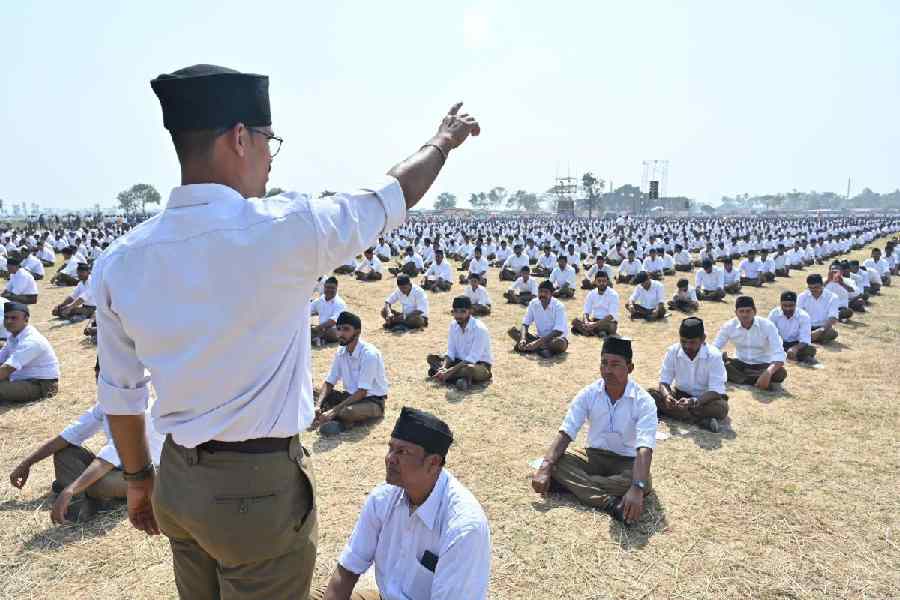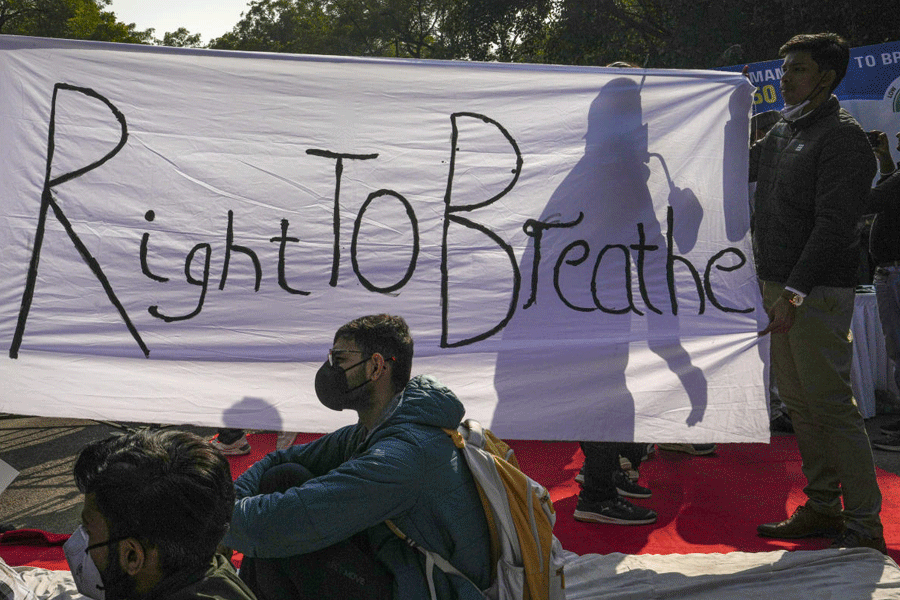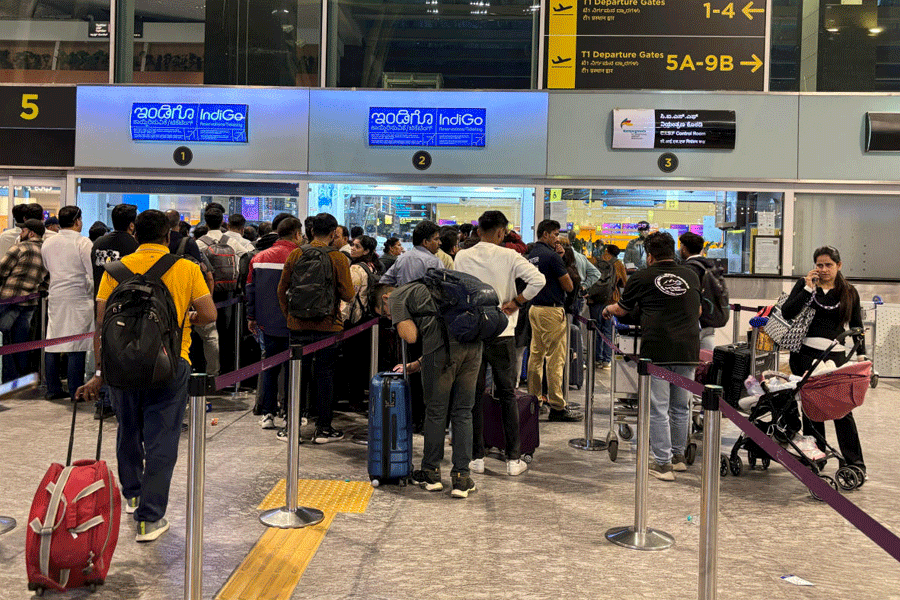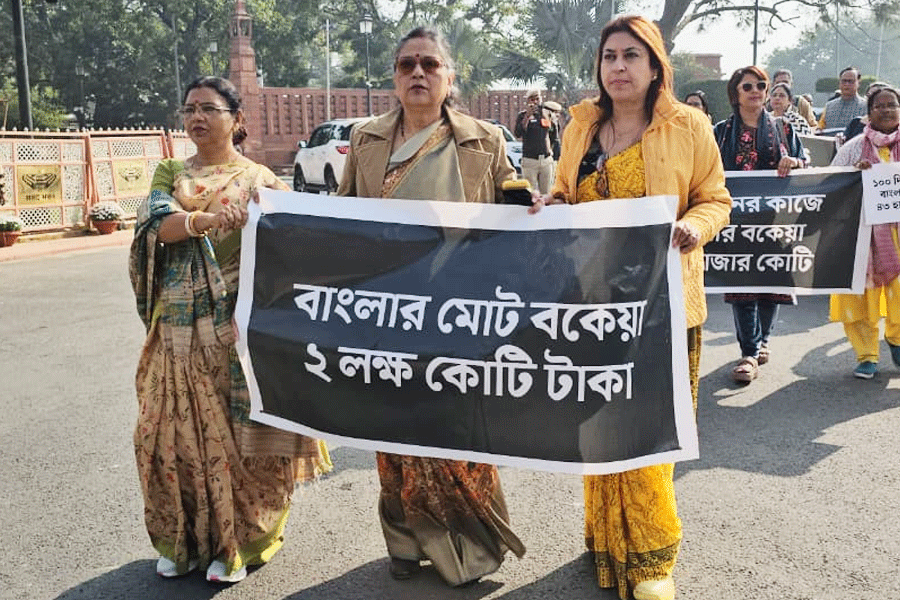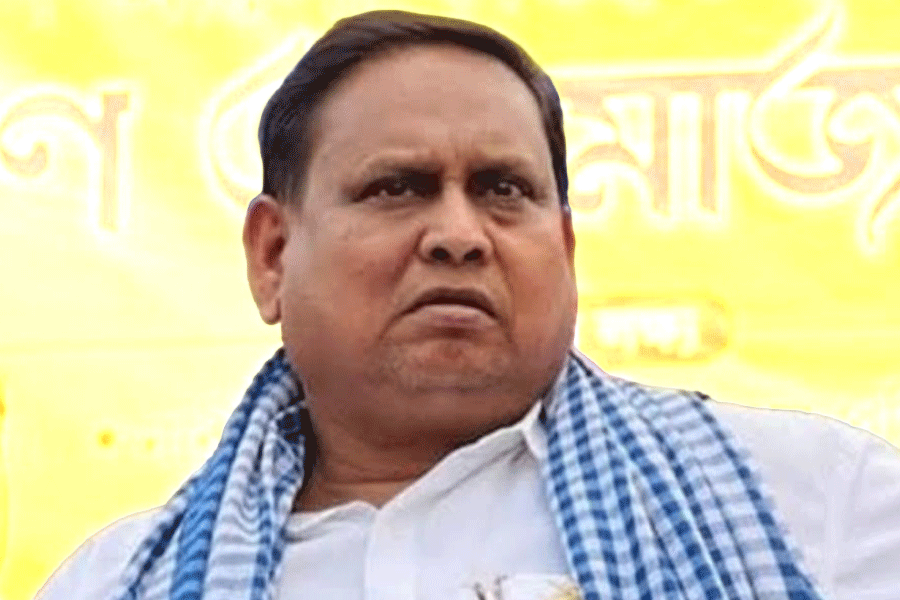Since Mamata Banerjee ousted the Left in 2011, the Rashtriya Swayamsevak Sangh has claimed to have recorded a fivefold growth in Bengal, gradually stepping into the space vacated by a declining CPM.
The ideological fountainhead of Hindutva has now set itself the target of establishing units in each of the state’s 3,354 gram panchayats ahead of next summer’s Assembly elections.
It has drawn up a series of religious and “cultural” programmes towards this objective since the 10-day Bengal visit by its chief, Mohan Bhagwat, in February.
“The RSS is celebrating its centenary this year and in Bengal, our target is to reach and form units in all the gram panchayats,” said Jishnu Basu, the Sangh’s publicity and campaign head for the eastern region.
The drive will extend to Muslim-majority areas, too.
“We have more organisational units in Kaliaganj, a minority belt (in North Dinajpur), than in any Hindu-majority area of Calcutta,” Basu said.
The Sangh’s units fall under three categories — shakhas, milans and mandalis, or daily, weekly and monthly assemblies, respectively.
According to data the Sangh compiled in March, the organisation has 4,540 units (counting all three categories) in the state. A source said that if the RSS achieved its centenary-year target, it would have at least 8,000 units in the state ahead of the Assembly elections.
In 2011, the RSS had just 830 units in Bengal; before 2006, it had fewer than 500. It intensified its focus on the state after the 2016 Assembly polls, and by January 2017, the number of its units had jumped to 1,496.
The Sangh has been promoting its agenda across Bengal through its numerous affiliates that operate in various spheres. It runs schools and cultural institutions that propagate the educational and cultural ideology of Hindutva.
As the BJP ratchets up its Hindutva politics in Bengal, the groundwork done by the RSS has played a key role in helping the party consolidate the Hindu vote in the state.
Many in the BJP believe that the Sangh’s micro-level spadework lay behind the party winning 18 of Bengal’s 42 Lok Sabha seats in 2019. The RSS had diligently pushed the “Muslim appeasement” charge against Mamata to influence Hindu voters.
This narrative, however, did not bring the expected success in the 2021 Assembly elections. This has necessitated a new approach.
Senior Sangh leaders believe that the turmoil in Bangladesh and the recent Murshidabad violence can help consolidate Hindu votes in the run-up to the 2026 elections.
‘Ideological shift’
As the Left steadily ceded ground, a sizeable chunk of Hindu voters, once considered secular and liberal, began endorsing the Hindutva narrative.
Political scientist Biswanath Chakraborty said there had been a fundamental ideological shift among individuals who previously upheld the values of pluralism and secular democracy. Many have now become proponents of Hindutva, whether hard-line or soft.
“This paradigm shift can be easily understood in educated circles. Teachers in higher education — colleges and universities — who once advocated pluralism are now openly supporting Hindutva,” Chakraborty said.
“It represents a significant transformation in thought, one that the RSS and the broader saffron ecosystem have successfully helped fashion by exploiting the ideological void left by the Left.”
Chakraborty observed that this Hindu consolidation had not just benefited the BJP but indirectly boosted Trinamool by helping it rally minority voters in response tothe trend.
“Trinamool is reaping the benefits of the Sangh’s efforts by consolidating minority votes,” he said.
The state BJP believes that a four per cent shift of Trinamool’s Hindu vote can help it win Bengal next year despite all the infighting and organisational deficiencies that bedevilthe party.
Trinamool sources laugh off such claims as a pipedream.
Camp rush
The seriousness of the Sangh’s intent can be gauged from the six training camps that it wrapped up in various parts of Bengal on Sunday.
One of these was an interstate camp in West Midnapore, where the 267 participants included volunteers from Odisha and Sikkim as well.
“Interstate training camps in Bengal are held after two or three years. This time, we saw a 20 per cent rise in participants,” Biplab Roy, the Sangh media coordinator for south Bengal, said in Calcutta.
The other five were intrastate camps. Two were held in Raiganj (North Dinajpur) and one each in Raipur (Bankura), Rampurhat (Birbhum) and Uluberia (Howrah).
A source said participation had increased at all thesefive centres.
Mamata concern
Trinamool’s concern at the rise of the RSS was evident in the aftermath of the April riots in Murshidabad when Mamata, in her official letterhead, blamed the Sangh’sdivisive politics.
“I have not named the RSS before, but now I am compelled to identify them. Together, they (the BJP and the RSS) have launched a vicious false campaign in the state,” Mamata wrote in her public appeal on April 19.
“They are using the backdrop of an unfortunate incident provoked by them to play divisive politics. They are planning to implement a divide-and-rule strategy. This is sinister.”
Despite the Sangh’s refusal to officially admit a political role or affiliation, its ability to influence poll outcomes is widely accepted.
Some BJP leaders say the impact of the Sangh’s popular outreach was felt during last year’s Delhi Assembly elections, when the BJP ended the Aam Aadmi Party’s decade-old stranglehold over the capital.
Sangh founder Keshav Baliram Hedgewar had made it clear that the outfit’s objective was to organise “the entire society and ensure the protection of Hindu Dharma”.
“Strength, it should be remembered, comes only through organisation. It is therefore the duty of every Hindu to do his best to consolidate the Hindu society. The Sangh is just carrying out this supreme task,” Hedgewarhad said.

